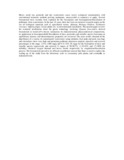Please use this identifier to cite or link to this item:
https://cris.library.msu.ac.zw//handle/11408/1177Full metadata record
| DC Field | Value | Language |
|---|---|---|
| dc.contributor.author | Nharingo, Tichaona | - |
| dc.contributor.author | Moyo, Mambo | - |
| dc.date.accessioned | 2016-05-03T13:57:49Z | - |
| dc.date.available | 2016-05-03T13:57:49Z | - |
| dc.date.issued | 2015-10 | - |
| dc.identifier.issn | 0301-4797 | - |
| dc.identifier.uri | http://hdl.handle.net/11408/1177 | - |
| dc.description.abstract | Heavy metal ion, pesticide and dye wastewaters cause severe ecological contamination with conventional treatment methods proving inadequate, unsuccessful or expensive to apply. Several biomaterials have recently been explored for the biosorption and biocoagulation-flocculation of pollutants .from wastewaters. In the past 10 years, there has been an extensive research output on the use of biological materials such as agricultural wastes, chitosan, Motinga Oleifera, Eichhomia crassipes. bapteria,/algae. Cactus plants etc. in environmental remediation. The present paper reviews the scattered iniof(nation about the green technology involving Opuntia ficus-indica derived biomaterials in wastewaf^n efecon- tamination. Its characterization, physicochemical compositions,its application in biosorptiorelaftd flocculation of dyes, pesticides and metallic species focussing on equilibrium, kinetics and thermodynamic properties are reviewed. The main results obtained in the depollution of a variety of contaminated wastewaters using cladodes, fruit pulp and peels mucilage and electrolytes show very high and promising pollutant maximum sorption capacities and removal percentages in the range -125.4,-1000 mg/g and 0.31-2251.56 mg/g for the biosorption of dyes and metallic species respectively and removal % ranges of 50-98.7%, 11-93.62% and 17-100% for turbidity, chemical oxygen demand and heavy metals respectively by coagulation-flocculation process. The biomaterials proved to be efficient in pollutant removal that there is need to explore the scaling up of the study from the laboratory scale to community pilot plants and eventually to industrial levels. | en_US |
| dc.language.iso | en | en_US |
| dc.publisher | Elsevier Ltd | en_US |
| dc.relation.ispartofseries | Journal of Environmental Management; | - |
| dc.subject | Adsorption bridging, coagulation-flocculation, entropy-enthalpy compensation, opuntia ficus-indica ,polygalacturonic acid. | en_US |
| dc.title | Application of Opuntia ficus-indica in bioremediation of wastewaters: a critical review | en_US |
| dc.type | Article | en_US |
| item.fulltext | With Fulltext | - |
| item.openairetype | Article | - |
| item.cerifentitytype | Publications | - |
| item.grantfulltext | open | - |
| item.openairecristype | http://purl.org/coar/resource_type/c_18cf | - |
| item.languageiso639-1 | en | - |
| Appears in Collections: | Research Papers | |
Files in This Item:
| File | Description | Size | Format | |
|---|---|---|---|---|
| application of opuntia.pdf | Abstract | 19.54 kB | Adobe PDF |  View/Open |
Items in MSUIR are protected by copyright, with all rights reserved, unless otherwise indicated.



